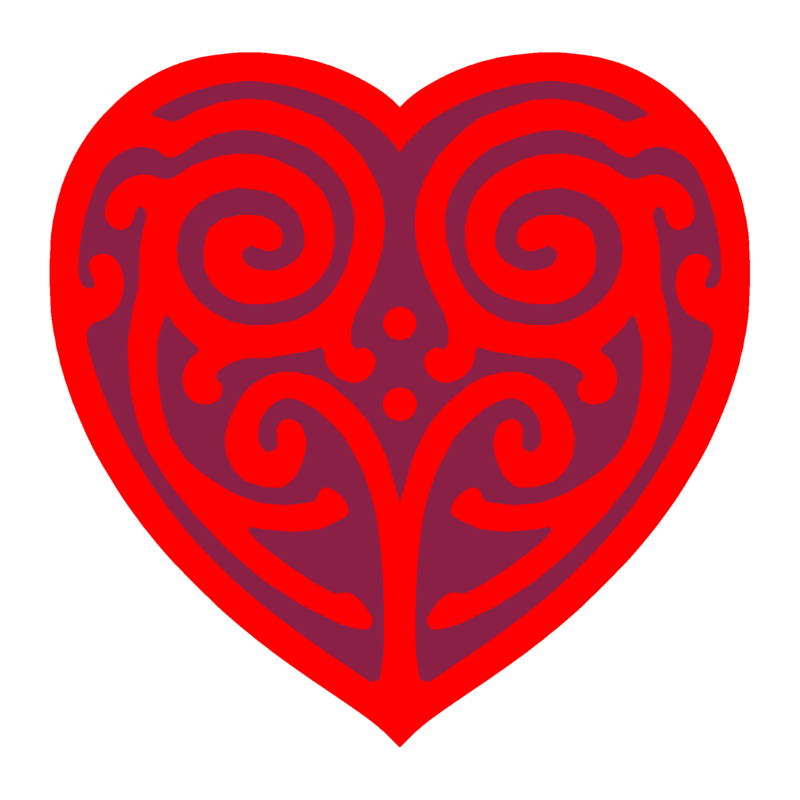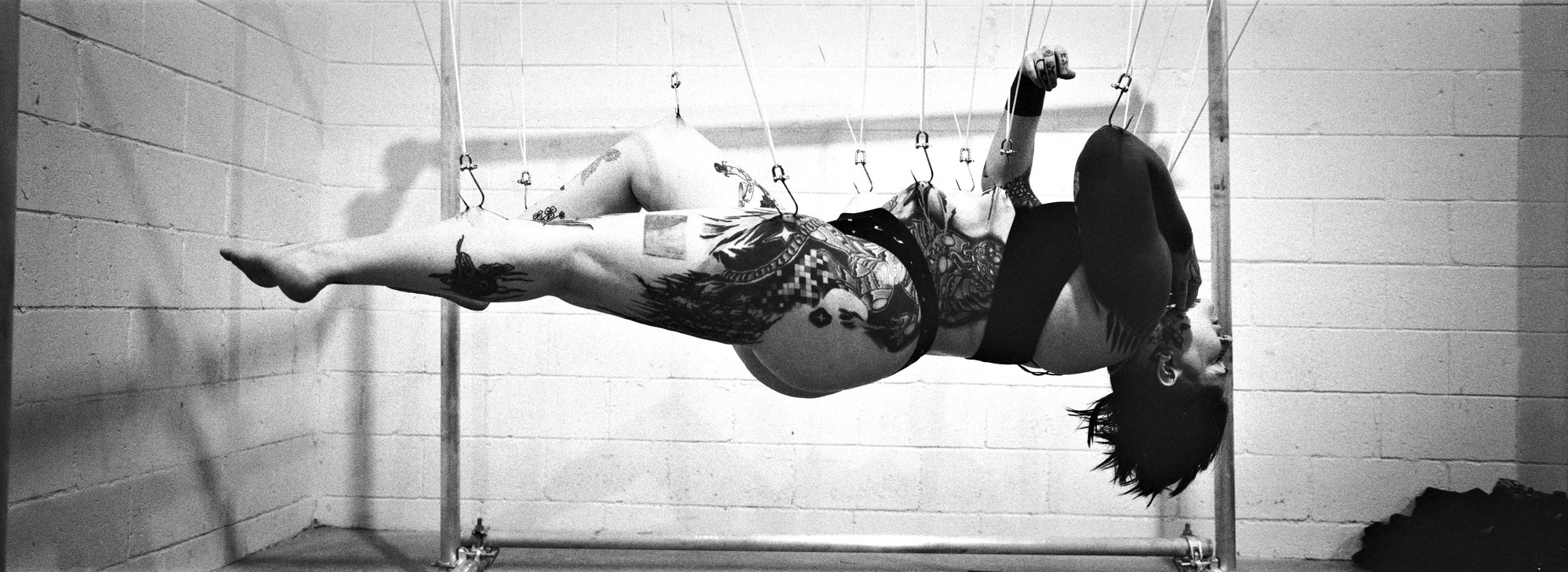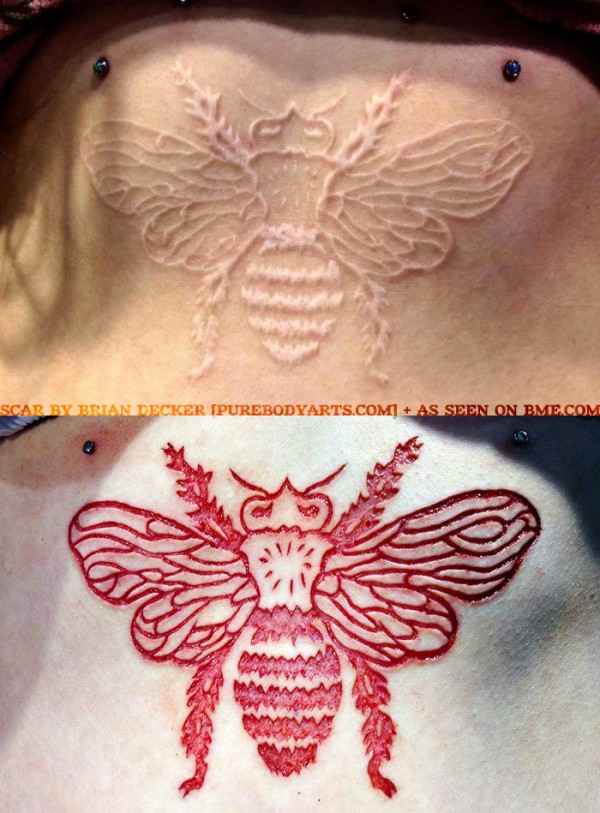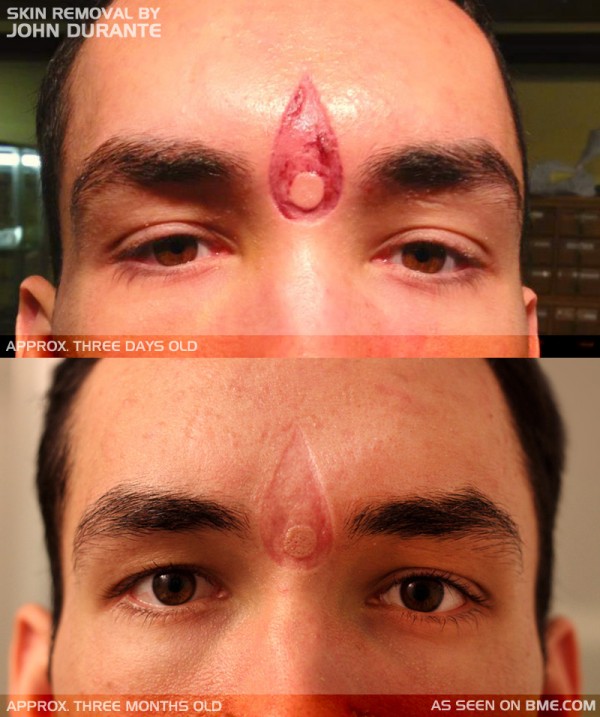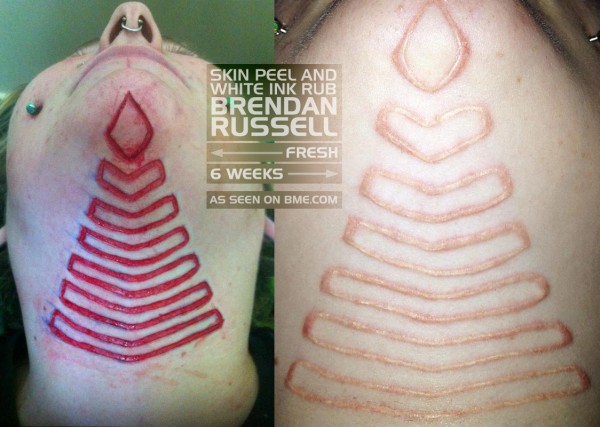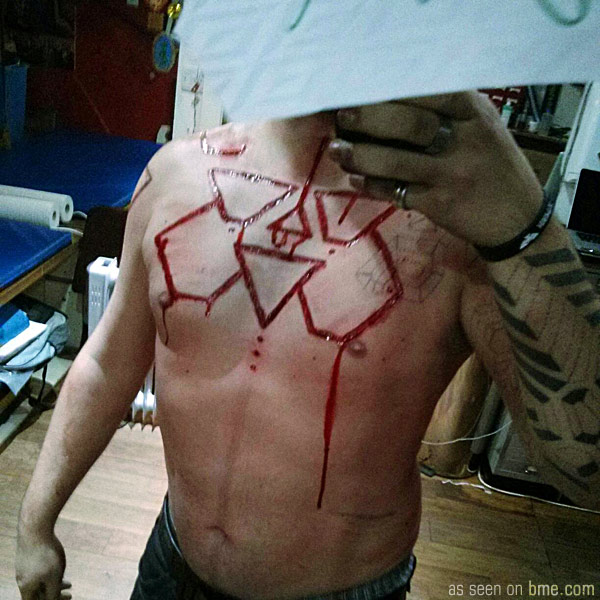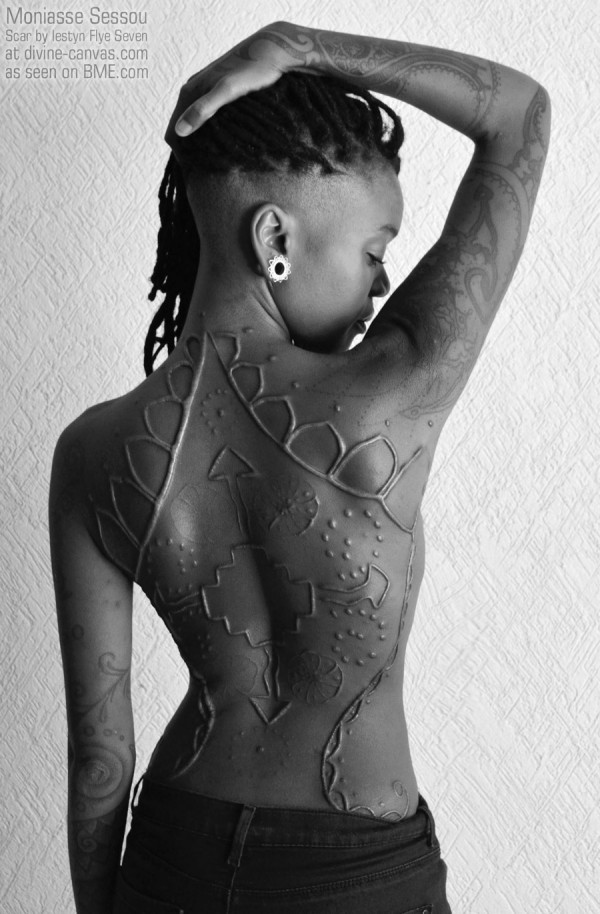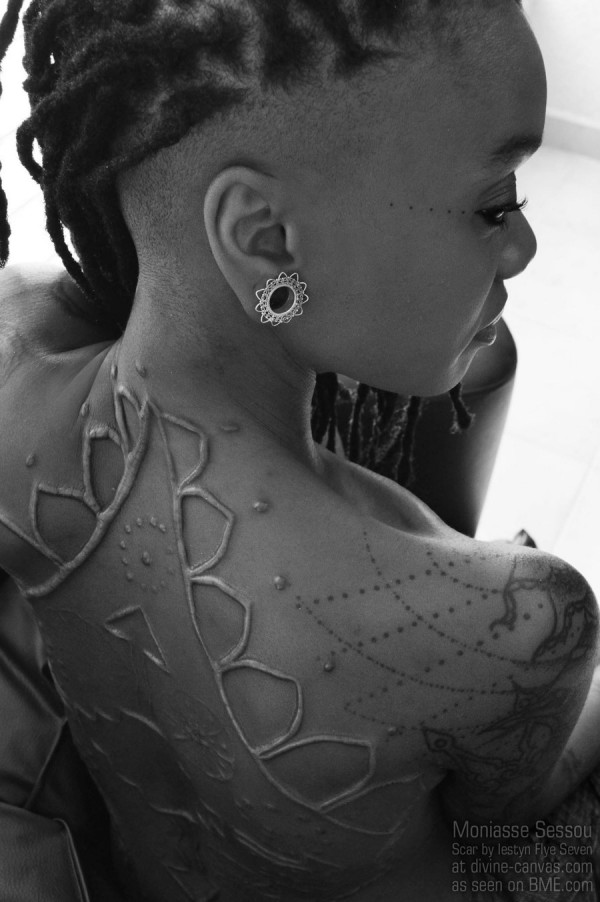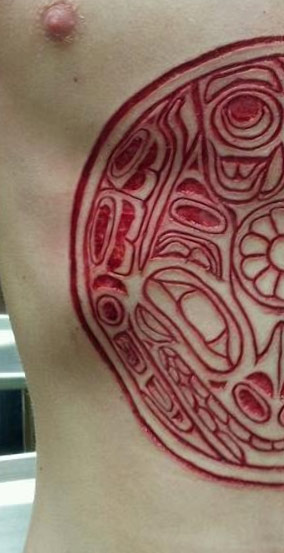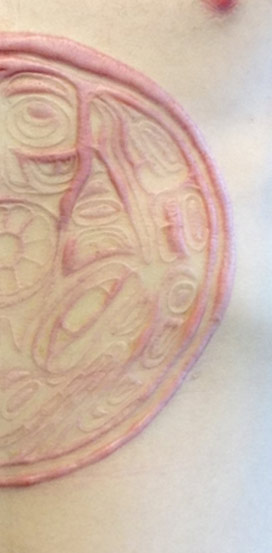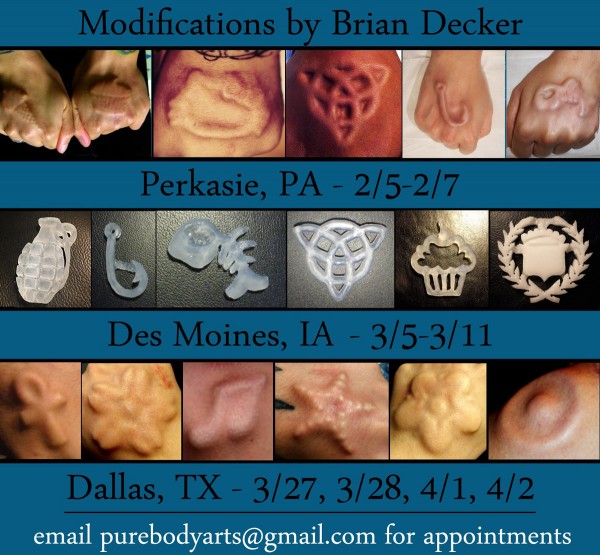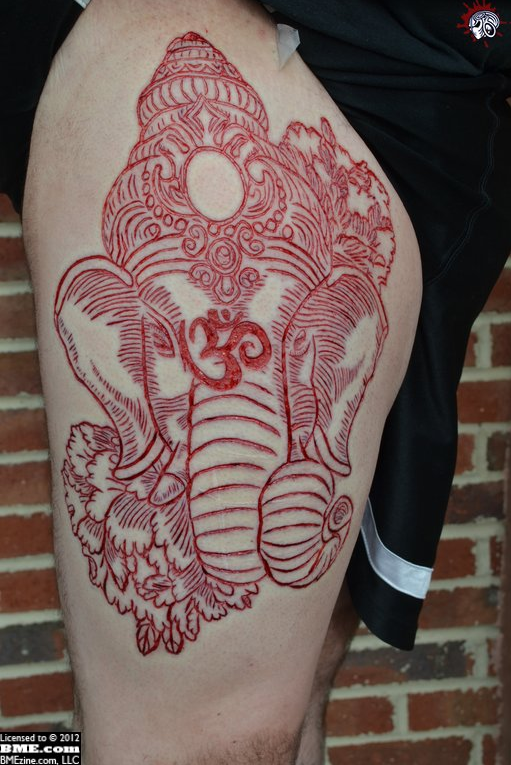Last February Brian Decker (purebodyarts.com) cut this amazing piece of scart (hmm… that doesn’t sound appealing… I need a better term), and now a year later it’s beautifully healed. What can I say about it? It’s stunning, one of my favorite pieces in some time.
Tag: Scarification
-
Healing Facial Scars
Written by
I think most people know of the Maori tradition of facial tattooing or Moko, but I suspect most people see this tradition as being about tattooing (as in using needles to poke a design using ink into the skin). At its roots though it’s more likely an extension of their tradition of wood carving — similar patterns are chiseled into their homes, furniture, and boats. Mokos appear to have began by applying this wood art to the human body, literally chiseling or carving designs into the face, using similar tools for similar results. Some time after this practice began, ink was the added to the scars, making them more visible, and in time the tradition slowly moved away from scarification-based methods to tattooing-based ones. Some early photos show the three dimensional nature of Mokos created using the ink-rubbing scarification technique, although by the time Western anthropologists began documenting the practice it was already falling out of fashion.
Anyway, I was reminded of that history when I saw this skin peel done by John Durante (of Seattle-based jewelry company Evolve), which you can see here both fresh and well into healing. I really like the way he has used a sort of “reverse negative space” by cutting out a simple shape, but leaving a circle of skin in the middle untouched. As to why these facial scars inset rather than raising (as most scars do), it’s possible that it’s some evolution that makes facial injuries less likely to disfigure, it could be due to there being less subcutaneous fat, or it could be due to the vascular nature, but I don’t really have a good explanation as to why the majority of facial scars are “innies” rather than “outies”. If there are any medically aware readers that want to save me some googling, I’m like a Ferengi… all ears.
You don’t have to move far off the face for the scarred skin to start being more likely to raise than stay inset. Here’s another good example of a scar showing fresh versus healing, a throat piece done by Brendan Russell of Tribal Urge in Newcastle, NSW, Australia. The sharp-eyed will notice that this isn’t just a skin removal scar by the way — it’s also an ink rubbing done with white ink, which has the interesting side-effect of making the age of the scar difficult to eyeball.
-
Textural Work In Scarification
Written by
About two months ago Wayne Fredrickson of Zodiac Tattoo Studio in Moreno Valley, CA did this scar of an ammonite fossil. I like the way the design leaves out the edges of the shell, but instead focuses on the texture of the shell. The resultant effect reminds me of a textural rubbing of a fossil, and seems especially well suited to the scarification artform.
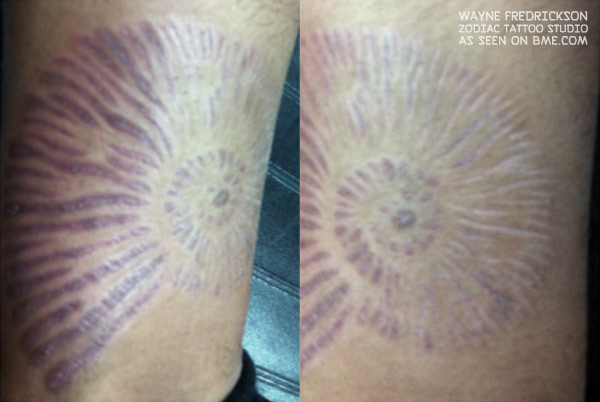
In terms of building up a tactile texture landscape, I’m also reminded of this scar that Iestyn of London’s Divine Canvas (divine-canvas.com). It’s about four years old in this photo.

-
Cutting through the air
Written by
As you know, I like seeing pieces that combine multiple body art disciplines, and I thought this was an elegant example of scarification used alongside tattooing, each artform contributing to the part of the design they’re best able to execute. Unlike many tattoo/scar combos, where the tattoos (or sometimes the scars) are added as an afterthought or “upgrade” long after the initial mod is well healed, this example was designed as such from the beginning. The scarification portion was performed by Binho Barduzzi of Familia Amorim Tattoo Shop in Lisbon, and the tattoo by was done by his friend Rafa. The piece is well healed now as it was cut back in 2009, so I wish I could show you a healed picture of it but unfortunately their client lives in Brazil, practically on the other side of the planet from them in Portugal.
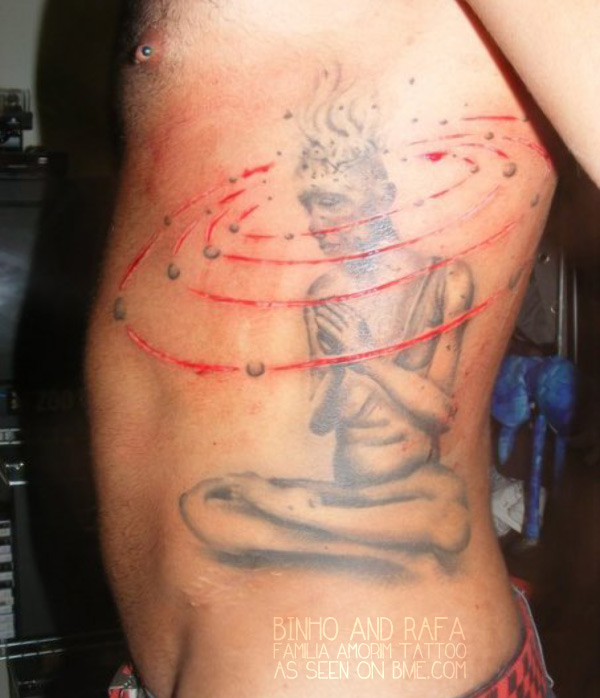
-
Yumyum
Written by
Skin removal scarification is the next step up from eating scabs and boogers. They’re like gateway drugs…
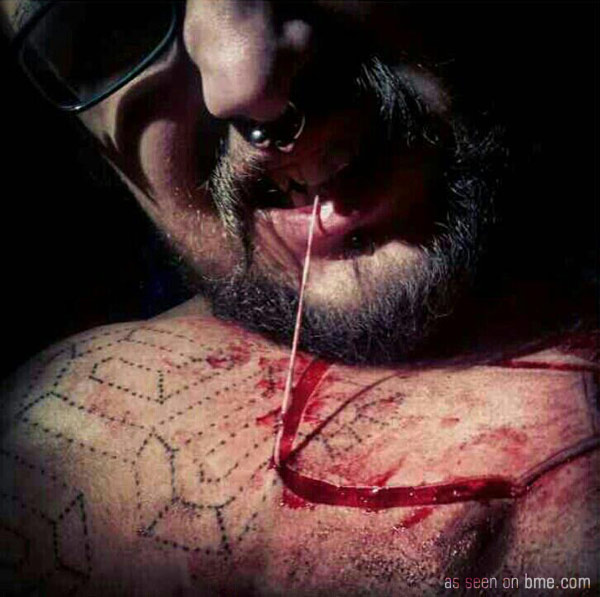
But seriously, while I like this scar on Joe by Iestyn a lot, something about it really reminds me of a cartoon face. Click the picture to see what I mean, assuming it doesn’t jump out at you already…
-
Strikingly Beautiful Backpiece Scar
Written by
For a wide variety of cultural reasons, even though dark skin is the ancestral home of the scarification artform, it’s rare for modern artists to have the opportunity to work on such skin. Iestyn Flye at London’s Divine Canvas (divine-canvas.com) recently had the chance to do a scarification backpiece on his friend Moniasse Sessou, and the result is incredible, easily placing it among the great masterpieces of modern scar art. Some of the design work came from friend and magician Touka Voodoo (whose work you’ve also seen here), the middle portion representing Moniasse’s spiritual path. The design was drawn on freehand, and the main part was done all at once, with the flower being done in a second session. It’s six or seven months old in these amazing photos.
-
Keloiding on a Tlingit-inspired Torso Scar
Written by
Kevin (who you last saw on ModBlog with Enigma) had this Tlingit (Pacific Northwest) art-inspired scarification done by Matt Vermillion of Artistic Skin Design in Indianapolis, Indiana, which is now quite well healed. The cutting looks nice and even — although there is intended variability in the line strength — but as you can see, parts of it keloided much, much more than others. Some of it, like the outside circle, is likely due to the initial cutting, but the majority of the variability appears to be from natural body motion and anatomy, and rubbing from clothes. His aftercare was mildly abrasive with sugar and vaseline.
Click on either half to see the scar in full, or click here for an animation that blends between the two (it’s not easy to line up a fresh scar with a healed one because of how much the skin distorts from the keloids, even with photos this similar), or if you’ve been missing NSFW posts, click here to check out the scar, completely overshadowed by Kevin’s transcrotal piercing and meatotomy.
I’ll also mention what I said to Kevin — who is considering adding more Tlingit scars to the sides of this piece — that I think this is a perfect canvas for tattooing over scarification… With the right application of black and red, and maybe white, it would really bring out the design and also give a nice nod to Tlingit art at the same time.
-
Owl Scarification
Written by
An absolutely beautiful owl scarification design well into its healing, done by Brendan Russell (facebook.com/brendan.russell.35) of Tribal Urge in Newcastle, NSW. I like the design because it’s quite complex, but at the same time, its simple shapes and repeating patterns keep it visually clean and strong from a graphic design point of view, which should give it a long life even as the scar fades over time.
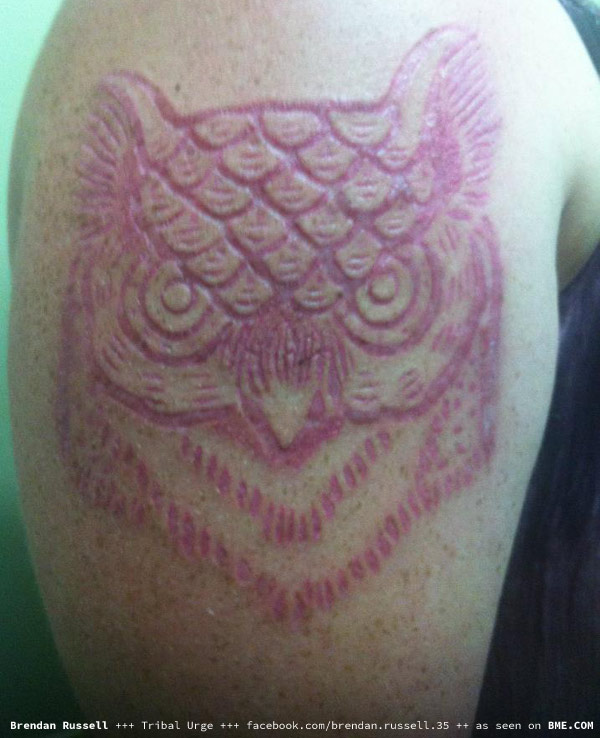
-
Decapitated Monroe Scarification
Written by
Another characteristically precise scarification by Brian Decker (purebodyarts.com) — an image that I’ve seen tattooed regularly but never scarred — a Decapitated Monroe, done on KC Jones at Inkaholics Anonymous. I should mention that Brian will be one of many brilliant artists at the International Scarification Convention in London, England in May if you want to make an appointment, and below the scar are a few of Brian’s US tour dates — Perkasie, Des Moines, and Dallas — showing a collection of his implant work, many of which you’ve seen here in the past. Contact PBA by email at [email protected] to make an appointment.
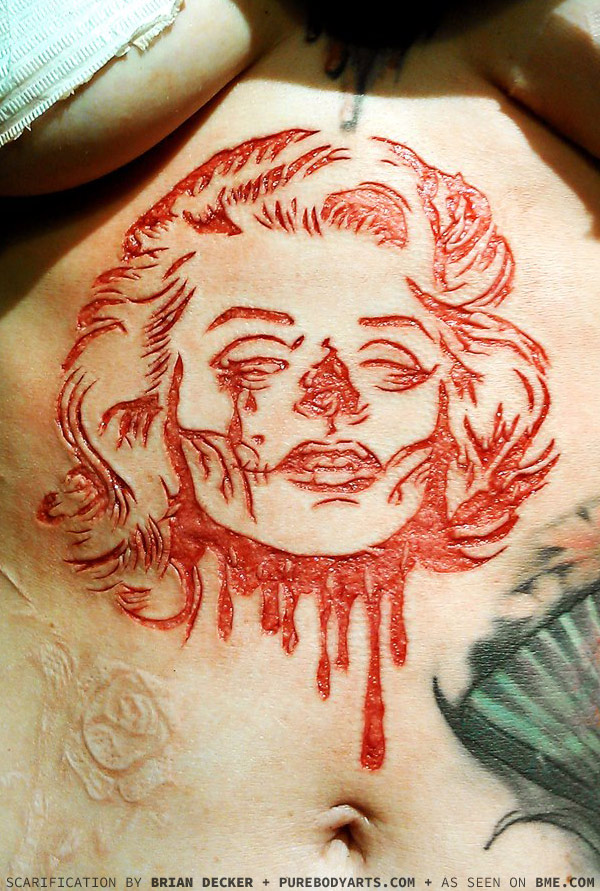
-
Ganesha cutting
Written by
This freshly done Ganesha cutting is the work of Richard Effin’ Ivey or Warlock’s Tattoo in Raleigh, NC.
The detail is pretty amazing and from what I’ve seen of Richard’s work, he does some great pieces. You can check out more of his work in his scarification portfolio on BME.
If you’re and artist and you would like your own portfolio on BME, contact BME Support to get it set up.
